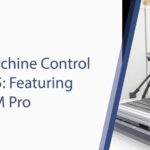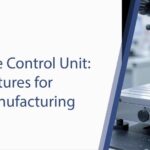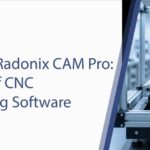In the era of modern manufacturing, where complex parts and tight tolerances are the norm, the old methods of quality control no longer suffice. A simple caliper or micrometer provides a limited, one-dimensional view.
To truly guarantee a product’s integrity, manufacturers have turned to a more comprehensive and powerful solution: 3d measurements in manufacturing.
This advanced metrology technique goes beyond traditional checks, capturing the complete geometry of a part and comparing it to its digital design with microscopic precision.
The shift to 3d measurements in manufacturing is a response to the ever-increasing demand for flawless parts in industries like aerospace, medical devices, and automotive.
This technology is the cornerstone of a proactive quality strategy, allowing companies to detect errors early, reduce waste, and accelerate product development. At Radonix, we understand that this precision is only possible with a superior control system
We specialize in providing advanced control solutions and software that act as the brains of these sophisticated measurement devices, enabling them to perform with unmatched speed and accuracy.
This article will provide a detailed look into the world of 3d measurements in manufacturing, explaining the core principles, the key technologies, and the immense benefits this crucial process brings to the modern factory floor.
What are 3D Measurements in Manufacturing?
At its core, 3d measurements in manufacturing is the process of collecting precise dimensional data from a physical object to create a comprehensive, three-dimensional digital model.
Instead of measuring a few key points with a hand tool, a 3D measurement device captures millions of data points across an entire surface.
This raw data is then processed and compared against the original Computer-Aided Design (CAD) model to identify any deviations, flaws, or inconsistencies.
The result of this process is not just a pass or fail; it’s a detailed, visual report that provides a complete understanding of a part’s dimensional accuracy.
This holistic approach ensures that a part meets all of its specifications—not just the ones that are easy to measure.
Why 3D Measurements are Essential
The adoption of 3d measurements in manufacturing has become a necessity for businesses that want to remain competitive.
The benefits extend far beyond a simple quality check.
Unprecedented Precision and Quality Control
A manual inspection can be prone to human error and is limited in scope. 3d measurements in manufacturing remove this variable entirely.
It provides objective, repeatable data that confirms a part’s geometry down to a few microns. This is invaluable for critical components where a minute deviation could lead to catastrophic failure.
The technology ensures that every part leaving the factory is a perfect match to the digital design, guaranteeing product quality and safety.
Accelerated Product Development and Reverse Engineering
For designers and engineers, 3D measurement technology is a powerful tool.
It allows for the rapid inspection of prototypes, speeding up the design validation and iteration process. If a physical part needs to be analyzed or replicated without an existing CAD file, a 3D scanner can capture its geometry in minutes.
This process, known as reverse engineering, is a key application of 3d measurements in manufacturing and is essential for rapid prototyping and design improvement.
Reduced Rework and Scrap
By integrating 3D measurement devices into the production line, manufacturers can implement in-process quality control.
This allows them to catch dimensional errors early, before an entire batch of parts is produced.
A color-coded deviation map from a 3D scan can instantly show where a tool is wearing out or a process is drifting, enabling engineers to make corrections on the fly.
This proactive approach saves time, material, and money by significantly reducing rework and scrap rates.
Enhanced Reporting and Traceability
In many industries, particularly aerospace and medical devices, detailed documentation and traceability are required for compliance.
A 3D measurement system automatically generates comprehensive, graphical reports that provide a permanent, digital record of a part’s inspection.
This data can be archived and easily accessed, providing an indisputable record for quality audits and regulatory bodies.
Key Technologies for 3D Measurements in Manufacturing
A range of sophisticated tools and technologies are used to perform 3d measurements in manufacturing.
Each has its own strengths and ideal applications.
Coordinate Measuring Machines (CMMs)
The traditional workhorse of metrology, a CMM uses a highly precise, touch-sensitive probe to record the X, Y, and Z coordinates of a series of points on a part’s surface.
CMMs are known for their extremely high accuracy, making them ideal for inspecting complex parts with tight tolerances.
While they are slower than optical methods, they are the gold standard for tactile measurement.
3D Laser Scanners
Laser scanners are non-contact devices that use a laser line or dot to capture millions of data points per second. They are exceptionally fast and are perfect for measuring complex, free-form surfaces like molds, castings, or automotive body panels.
The resulting digital model, or point cloud, can then be analyzed and compared to the CAD model.
Structured Light Scanners
Similar to laser scanners, structured light scanners are non-contact and work by projecting a pattern of light (often stripes or grids) onto a part’s surface.
Cameras then capture how this pattern is deformed by the part’s geometry.
This technology is known for its high resolution and is often used for inspecting small, intricate parts with very fine details.
Photogrammetry
This technique uses a series of high-resolution photographs taken from different angles to create a 3D model. It is particularly useful for measuring very large objects, such as aircraft fuselages or large castings, as it is highly portable and scalable.
The software then stitches the photos together and triangulates the points to create a comprehensive 3D model.
The Role of Software and Data in 3D Measurements
The hardware—the CMM or scanner—is only one part of the equation. The true power of 3d measurements in manufacturing lies in the software and the data it provides.
- Data Acquisition and Processing: The software is responsible for collecting raw data from the sensor and converting it into a clean, usable digital model.
- CAD Comparison: This is a crucial function where the scanned data is overlaid onto the original CAD model. The software then creates a color-coded deviation map that visually highlights any areas of the part that fall outside of the specified tolerances.
- Geometric Dimensioning and Tolerancing (GD&T): Advanced software can perform complex GD&T analysis, automatically checking features like flatness, concentricity, and parallelism to ensure the part meets all engineering specifications.
- Automation and Integration: The most advanced 3d measurements in manufacturing systems are integrated into automated workflows. Robots can be used to move a part to the scanner, and the software can automatically generate reports and communicate results to a factory’s network.
The Radonix Advantage: Powering 3D Measurement Solutions
At Radonix, we specialize in providing advanced control systems and software that are the brains behind sophisticated industrial devices.
We understand that the speed and accuracy of a CMM or the responsiveness of a 3D scanner depend entirely on the quality of its motion controller and the intelligence of its software.
Our solutions are designed to empower manufacturers by providing:
- High-Performance Control Systems: Our technology enables 3d measurements in manufacturing devices to move with unmatched speed and precision, dramatically reducing inspection times.
- Robust and Reliable Architecture: We provide the technological foundation for stable and consistent measurement results, day in and day out.
- Seamless Integration: Our control systems are built for connectivity, allowing for easy integration with a wide range of sensors and analysis software.
The future of quality control is in three dimensions. By investing in the right technology, you can ensure that your products are not just good, but perfect.
Ready to elevate your quality control? Contact Radonix today to learn how our advanced control systems can power your 3D measurement solutions.
Contact Us:
- E-Mail: info@radonix.com
- Phone: +90 (553) 920 5500








